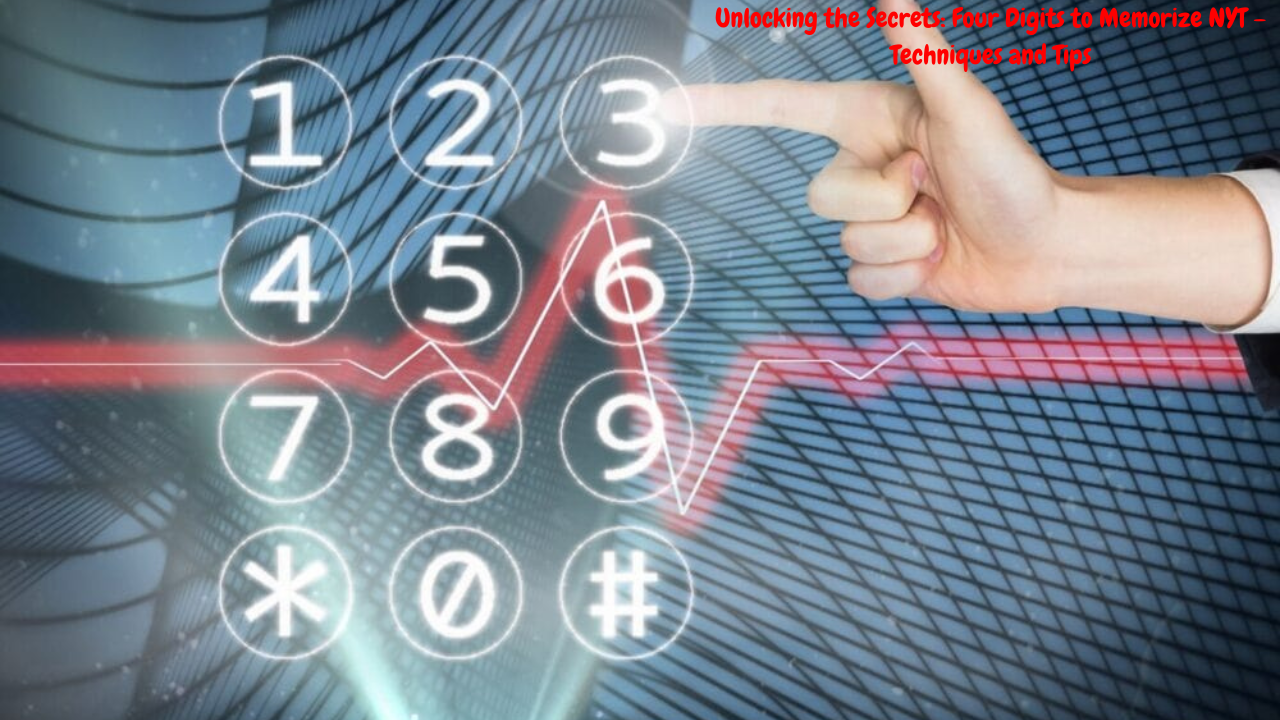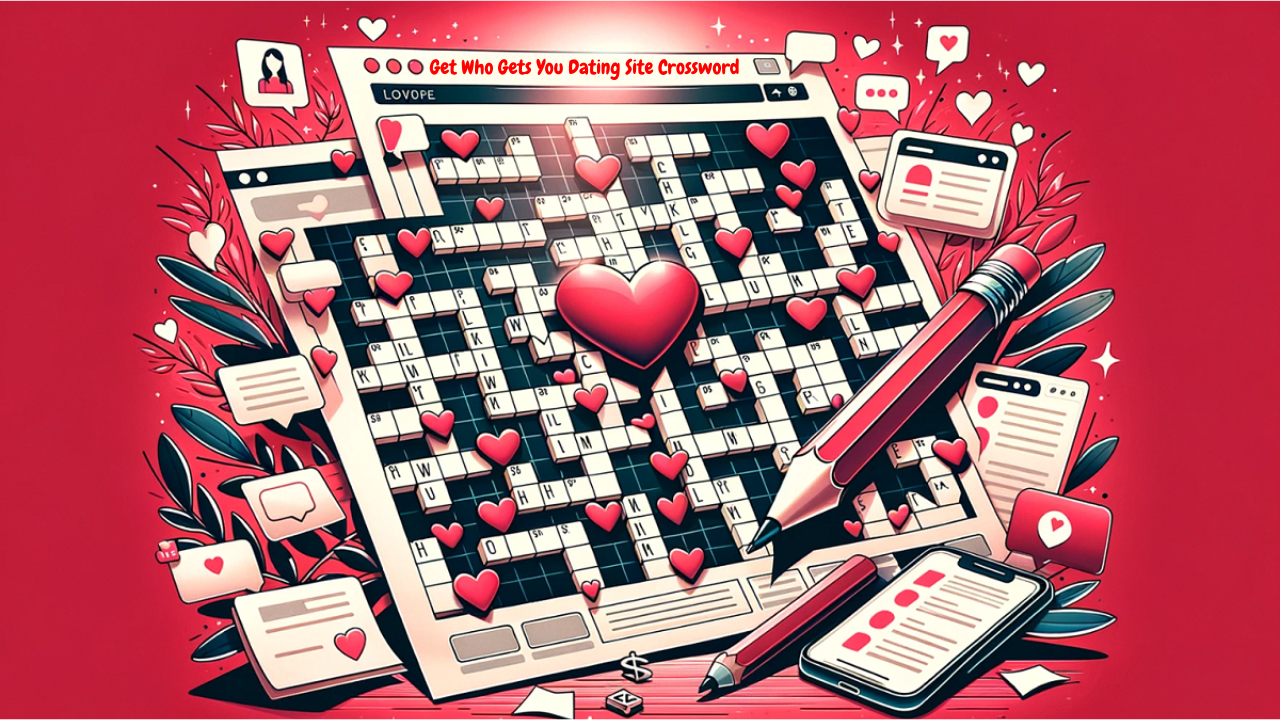Unlocking the Secrets: Four Digits to Memorize NYT – Techniques and Tips
TechFour Digits to Memorize NYT! In our speedy- paced world, figures play a important function in our each day lives. From telephone figures and Legs to vital dates and regard word, we are continuously bombarded with numerical information. Among these, 4- number figures regularly stand out as particularly challenging to bear in mind due to their brief yet complexnature. However, you ’re no longer by myself, If you ’ve ever determined your tone floundering to flash back a named set of 4 integers. In this comprehensive blog post, we ’ll explore different strategies to study four- number figures, in particular knitter- made for compendiums of The New York Times( NYT) – your last primer to learning this pivotal skill. Four Digits to Memorize NYT! Four Digits to Memorize NYT! Why study Four- number figures? Before diving into the strategies, it’s important to fete why learning 4- number figures can be particularly useful. Then are a many motives: Security: Four- number Legs and watchwords are generally used for banking, online bills, and security structures. Flashing back those figures ensures your accounts are steady and without difficulty on hand. Convenience: Flashing back critical figures like the ending 4 integers of a social safety number, credit card volume, or phone volume can save time and drop frustration. Mental Agility: The process of learning figures can ameliorate your universal reminiscence capabilities and cognitive function, keeping your mind sharp. ways to study Four- number figures. 1. Chunking Chunking entails breaking down a bigger piece of information into lower, implicit corridor. This system leverages our brain’s desire for patterns and lower sets of data. Example: Number: 2763 Chunked: 27 and 63 By dividing the volume into lower figures, it’ll come less delicate to bear in mind. 2. Visualization Creating a intellectual snap related to the figures can specially prop in memory retention. imaging some thing familiar or placing could make the figures lesser memorable. Example: Number: 2763 Fantasize: 27 as a brace of bones showing 2 and 7, and 63 as a withdrawal age with an snap of a gold watch. Visualization hyperlinks abstract figures to concrete snaps, making them less delicate to don’t forget. 3. Association Linking figures to informed ideas or tremendous particular gests could make them more memorable. This approach gates into your being moxie base and emotional connections. Example: Number: 2763 Associate: 27 along with your twenty seventh birthday and sixty three along with your forefather’s withdrawal age. By associating figures with meaningful events or mortal beings, they come less delicate to don’t forget. 4. Mnemonics Mnemonics involve growing a expression or word where each element represents a number in the volume. This system is especially effective for learning sequences of figures. Example: Number: 2763 Mnemonic: ” Two Giant Snakes Three “ Creating a quirky or memorable expression enables anchor the integers for your reminiscence. 5. Repetition Repetition is a classic system that enhances memory through harmonious practice. constantly writing down or articulating the range enables solidify it for your studies. Example: Number: 2763 Practice: Write down 2763 a couple of times and say it out loud constantly. Reiteration enables switch information from brief- term to lengthy- time period reminiscence. 6. Proses and Measures Using rhymes and measures can make the figures stick. Creating a jingle or a track with the variety can be a entertaining and important way to study it. Example: Number: 2763 Rhyme: ” Twenty- seven, sixty- 3, it’s as smooth as can be! “ Adding a musical detail can make the memorization manner instigative and important. 7. Storytelling This approach uses narrative to link the figures together. Example: Number: 2763 Story: ” At 27, I traveled sixty three long hauls to satisfy my friend. “ Practical Applications: Real-World Examples learning Important Dates Still, you might come upon good sized 4- number times that you want to consider, If you frequently examine papers roughly major events or anniversaries in The New York Times. Example: Time: 1945( End of World War II) Fashion: Association Associate: 19( youngish dogface) and 45( peace sign). Flashing: Back Subscription Details For NYT subscribers, flashing back the last 4 integers of your subscription range may be salutary for logging in or client support inquiries. Example: Number: 1234 Fashion: Chunking and Visualization Knob: 12( dozen eggs) and 34( a basketball jersey number). Recalling: Contact Information Whether it’s the ending 4 integers of a intelligencer’s cellphone wide variety or a touch at NYT, flashing back these figures can be vital. Example: Number: 8765 Fashion: Mnemonics Mnemonic: ” Eight Unicorns, Seven Brownies “. Advanced ways and Tools For those trying to embellish their memory in addition, several superior strategies and tools may be integrated. Memory Palaces A reminiscence palace entails imaging a familiar region and associating each room or region with the volume you need to recollect. Example: Number: 2763 Memory Palace: Imagine your house, place 27 in the kitchen( seven- subcaste goodies), and sixty three in the living room( a big timepiece showing 630). Spaced Repetition Systems( SRS) Spaced reiteration is a studying approach that entails growing ages of time among posterior overview of formerly learned material. Example: Use apps like Anki or Quizlet to record periodic opinions of the number 2763 to make sure it stays fresh on your reminiscence. Flashcards Creating flashcards with the number on one hand and the visualization, story, or mnemonic on the contrary may be a helpful device for exercise. Example: Number: 2763 Flashcard: One aspect with ” 2763 ” and the volition with ” Two Seven- subcaste galettes and a Large timepiece. “ The Cerebral Aspect of Memory Understanding how our memory works can in addition bedeck our capacity to study 4- number figures. Short- Termvs. Long- Term Memory Short- term memory holds data compactly, while lengthy- time period memory shops information more permanently. ways like reiteration and liar help transfer statistics from short- time period to long- time period memory. The part of feelings Emotional Connections can beef up reminiscence retention. Associating figures with emotionally charged events or










